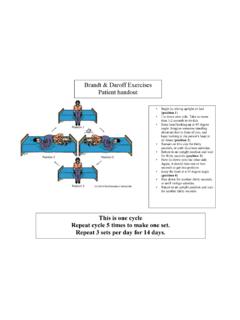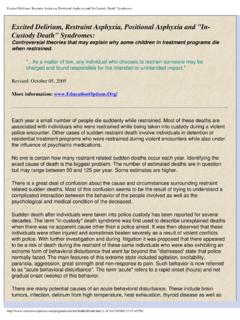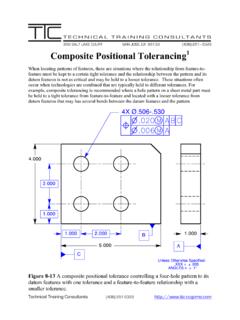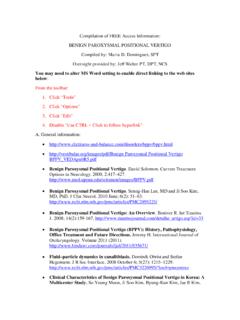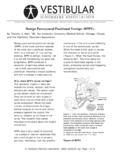Transcription of Benign Paroxysmal Positional Vertigo (BPPV) and …
1 C:\Documents and Settings\NRutherford\Local Settings\Temporary Internet Files\ \1OK4 PLO5\BPPN patient information Benign Paroxysmal Positional Vertigo (BPPV) and Epley Manoeuvre Benign Paroxysmal Positional Vertigo is one of the commoner causes of dizziness and typically involves short attacks of rotational Vertigo , which are brought on by rapid head movements; often involving rolling over in bed. BPPV is a problem in the balance organ due to loose particles in the fluids of the inner ear. These particles are normally fixed in place but sometimes break loose and get into a particular part of the balance organ causing BPPV.
2 This means that whenever you put your head in a certain position, the particles move and cause dizziness. Can BPPV be treated? Many people with BPPV get better by themselves probably due to the loose particles dispersing on their own. However research has shown that particles can be moved out of the way by placing the head in a series of positions. These manoeuvres appear to be very successful in treating the condition although it does not work for everyone. The manoeuvre is usually done once and may need to be repeated further.
3 The Epley Manoeuvre is a procedure to allow the debris to move out of the sensitive balance areas and into an area of the inner ear where it will not cause the balance organs to be stimulated. Instructions following the repositioning manoeuvre Following the manoeuvre there are a couple of things that you should do in order to avoid the particles going back to where they were: Do not lie completely flat on your back for 2 days (sleep with several pillows) Do not lie on your affected side for 5 days After this time, try to bring on your dizziness by lying down and turning over to see if it is still there.
4 Will BPPV return? Some people seem to be prone to getting BPPV and it can return on a regular basis. This is not common and most people get it only once. It is not possible to predict what will happen so in each case it is necessary to wait and see what happens.
